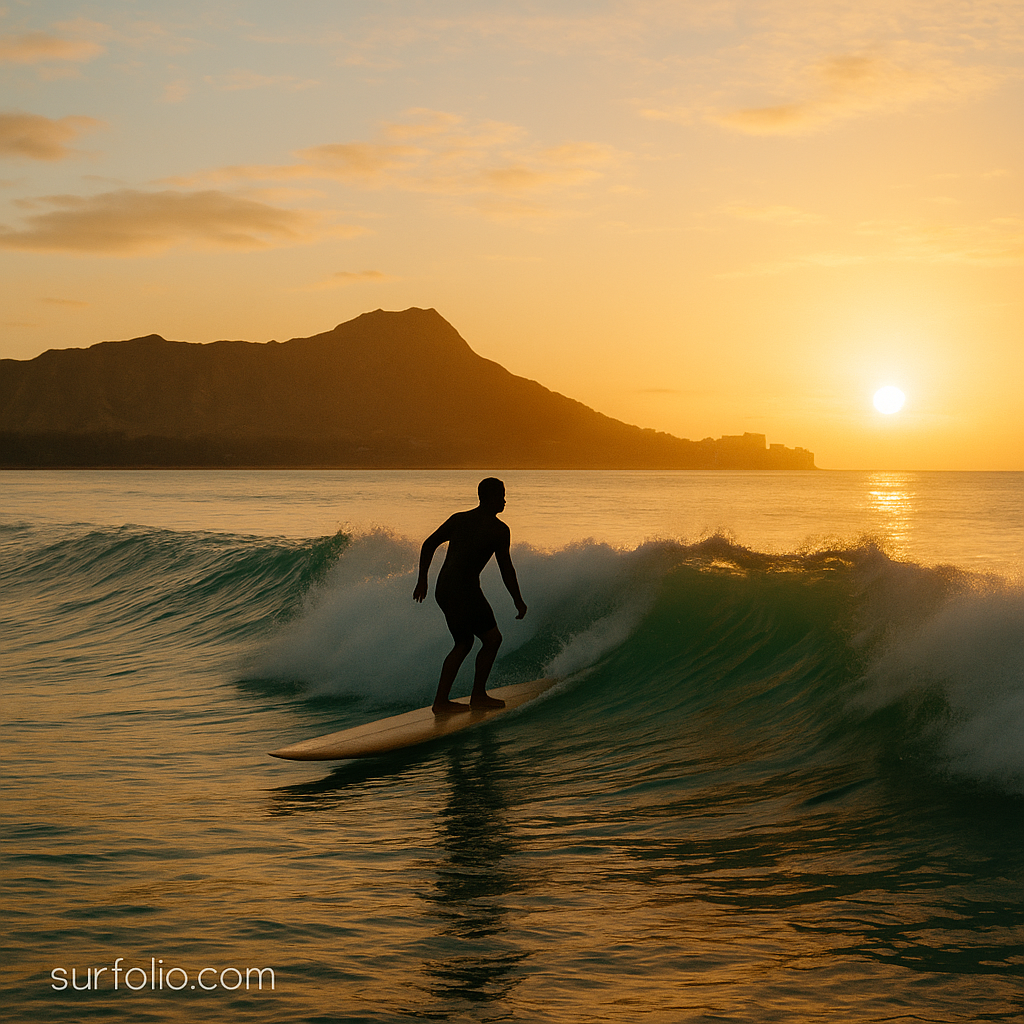
The Birthplace of Surfing
Modern surfing traces its heart and soul to ancient Hawaii, where wave riding wasn’t just a pastime — it was a sacred expression of identity, connection, and community. Long before surfboards filled beaches worldwide, Hawaiians were carving wooden boards, paddling into crystal-blue waves, and celebrating surfing as an art of harmony with the ocean.
To ancient Hawaiians, the ocean was alive — a force to be respected, not conquered. Surfing was known as “He’e Nalu,” meaning wave sliding, and it was woven into daily life, rituals, and even politics.
Surfing as a Spiritual and Cultural Practice
In early Hawaiian society, surfing wasn’t just sport — it was a spiritual act that reflected one’s relationship with nature. Surf sessions began with prayers and offerings to the gods of the sea, asking for safety and favorable swells.
The best surfers were often chiefs and royalty, who competed in front of their people to demonstrate skill, courage, and connection to divine power. The tradition of “Ali’i boards” — massive wooden boards reserved for nobility — symbolized this prestige.
For Hawaiians, the wave was more than water in motion. It was the heartbeat of the island.
The Ancient Surfboard: Craft and Symbolism
Before modern fiberglass and foam, Hawaiian surfboards were crafted from solid wood, typically koa, ulu (breadfruit), or wiliwili trees.
Three main board types existed:
- Alaia: Short and thin, ideal for quick maneuvers.
- Olo: Long and heavy, used by chiefs and skilled riders for smooth glides.
- Kiko’o: Medium-length, combining balance and speed.
Each board was shaped with care and blessed in ceremonies — surfing was as much about spirit and craftsmanship as it was about skill.
Surfing and Social Unity
Surfing brought Hawaiian communities together. It wasn’t limited by class or gender; men, women, and children all participated. Surf contests were common, and wagers were made on who could ride the longest wave or perform the cleanest turn.
When the surf was good, work paused. It was a time to celebrate, laugh, and connect. Surfing was a social equalizer and a shared joy that reflected the aloha spirit — one of community, respect, and love for life.
The Western Discovery and Decline
When Western explorers arrived in the 18th and 19th centuries, they documented Hawaiians surfing with awe. Captain James Cook’s crew in 1778 was among the first to record the spectacle of native surfers riding waves for pure pleasure.
But as colonial influence grew, traditional Hawaiian culture was suppressed, and surfing nearly disappeared. Missionaries labeled it as idle or inappropriate. For decades, the ancient art of He’e Nalu faded quietly — kept alive only by a few loyal surfers on Oahu and Maui.
The Revival of Surfing
In the early 20th century, Hawaiian icons like Duke Kahanamoku, the Olympic swimmer and global ambassador of aloha, reignited surfing’s spirit. Duke introduced the sport to Australia and California, spreading Hawaiian surf culture across the globe.
Thanks to him and his contemporaries, surfing became a bridge between tradition and modern sport — and Hawaii once again took its place as the world’s spiritual surfing capital.
The Legacy Lives On
Every wave caught today carries a piece of that Hawaiian heritage. The ritual, respect, and joy that define surfing all trace back to ancient Polynesian shores.
Modern surfers continue this legacy every time they paddle out — honoring not just a sport, but a sacred dialogue between human and ocean.
